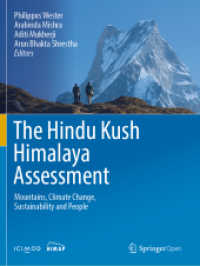Full Description
Cumulative environmental problems are complex, insidious, slow-motion tragedies that are all too common, from biodiversity loss, to urban air pollution, to environmental injustice. Taking an interdisciplinary, comparative and applied approach, this book offers a new framework for designing solutions using four integrated regulatory functions: Conceptualization, Information, Regulatory intervention and Coordination (the CIRCle Framework). Rules that deliver these functions can help us to clarify what we care about, reveal the cumulative threats to it and do something about those threats - together. Examples from around the world illustrate diverse legal approaches to each function and three major case studies from California, Australia and Italy provide deeper insights. Regulating a Thousand Cuts offers an optimistic, solution-oriented resource and a step-by-step guide to analysis for researchers, policymakers, regulators, law reformers and advocates. This title is also available as open access on Cambridge Core.
Contents
1. Introducing cumulative environmental impacts as a central problem for law; 2. Why cumulative environmental problems are difficult and implications for law: introducing the CIRCle framework; 3. Law and cumulative environmental problems: a landscape for analysis; 4. Conceptualization: laws for defining what matters, who matters, and what unacceptable harm means; 5. Information: Laws for producing, sharing, aggregating and analyzing information; 6. Regulatory intervention: laws for influencing cumulative harm; 7. Coordination: Laws for making links; 8. Not a drop to drink: Conceptualizing environmental justice in California groundwater; 9. Coral, coal and cattle: cumulative impacts and the great barrier reef; 10. Between nature and culture: regulating cumulative impacts on alpine Grasslands; 11. Design for regulating a thousand cuts: summary guidance and concluding reflections; Glossary; Index.







